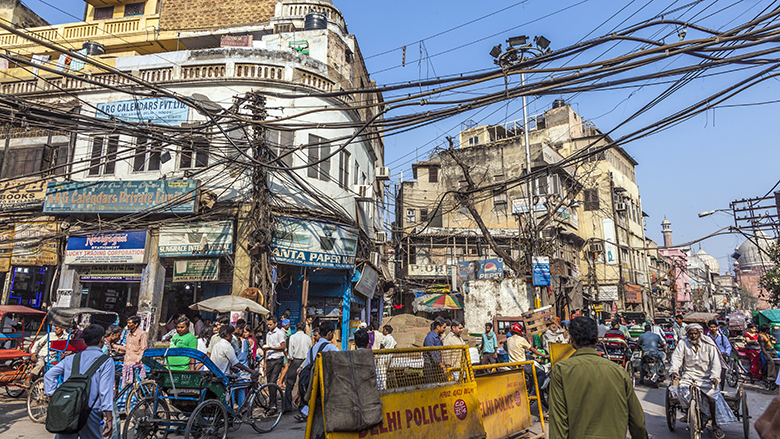Electricity shortages are one of South Asia’s most significant barriers to achieve its development.
More than a quarter of the world’s off-grid population live in South Asia. Millions of connected families and businesses across the region experience frequent blackouts.
The report In the Dark: How Much Do Power Sector Distortions Cost South Asia identifies distortions in the electricity supply chain that cause power outages and estimates their economic costs in Bangladesh, India, and Pakistan.
An Innovative Analysis of Power Distortions
To that end, the report surveys the entire power supply chain from fuel supply to power generation, transmission, distribution, and eventually, consumers.
The report underscores three types of distortions that lead to most inefficiencies:
- Institutional distortions that arise from weak governance and inefficient allocation of inputs and outputs of the electricity sector .
- Regulatory distortions coming from price regulation, subsidies, and cross-subsidies.
- Social distortions that cause environmental and health damages.
Put together, these distortions have contributed to fuel shortages, inefficient electricity generation and delivery, and wasteful consumption.
Key findings
- South Asia faces enormous needs to meet the electricity demands of its fast-growing economies while, at the same time, protecting its natural environment and the health of its people.
- South Asia has the world’s second-largest population living off the grid—255 million people in 2016, more than a quarter of all the people in the world living without access to electricity.
- Because of low access rates and low quality of supply, per capita electricity consumption in South Asia is the second-lowest in the world (after Sub-Saharan Africa). At 707 kilowatt hours (kWh) a year in 2014, it is less than a quarter of the world average.
- Multiple problems affect electricity supply, including the misallocation of fuel supply, inefficient electricity generation and dispatch of power plants, high losses in distribution, underpricing of energy, and inadequate pricing of emissions from fossil fuel–based electricity generation.
- Lack of reliable access to electricity is associated with lower income, higher poverty, poorer health and education, and less gender equality. Unreliable power supply also adversely affects the operation and growth of firms, contributing to substantial business losses.
- The full economic cost of distortions in the power sector is far greater than the fiscal cost of energy subsidies.
Recommendations
Such reforms can be instrumental in making the best use of existing facilities, avoiding waste, and increasing cleaner electricity supply.
Specifically:
- It is important to rationalize the price of energy so as to incentivize investment and conservation. The increased revenue from energy sales could be spent promoting more sustainable long-term growth. Meanwhile, utilities would have the resources to invest in the long-term reliability of the grid and provide higher quality service to all.
- However, in the absence of other reforms, too narrow a focus on liberalizing energy prices may be inadequate and, given the current inefficiencies in the sector, would lead to excessively high electricity costs, putting added stress on the poor and most vulnerable.
- Rather, increasing efficiency should be the main priority, together with a gradual increase in energy prices and targeted assistance to mitigate the impact on consumers.
- Addressing institutional distortions would yield huge efficiency gains. For example, allocating coal and gas based on transparent market rules rather than administrative orders would promote a more productive use of fuel, and implementing merit-based power dispatch would lead to greater reliance on the most efficient power plant.
- Adequate incentives would help improve the operating performance of utilities. Corporatizing utilities without fundamental changes in the incentives they face cannot guarantee improved operating efficiency.[World Bank]
















Add comment